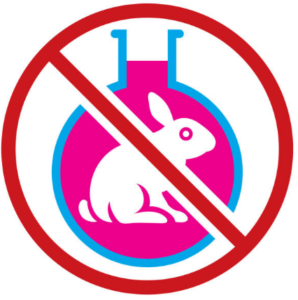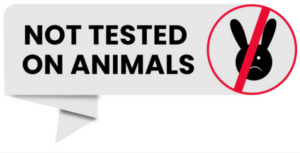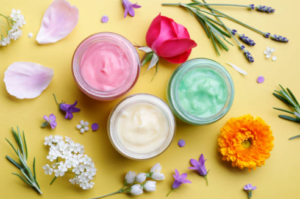Beyond the Label

In today’s beauty industry, the concept of cruelty-free products has gained significant traction. More and more consumers are becoming conscious of the impact their purchases have on animals and the environment. As a result, the demand for cruelty-free cosmetics, skincare, and personal care items has skyrocketed. However, navigating the complex world of cruelty-free certifications can be daunting. Beyond the label lies a web of regulations, standards, and practices that determine whether a product truly meets cruelty-free criteria. In this blog, we’ll delve deep into the certification process for cruelty-free products, shedding light on what it entails and how consumers can make informed choices.
At its core, cruelty-free certification assures consumers that a product and its ingredients were not tested on animals at any stage of development. While this seems straightforward, the reality is more nuanced. The absence of animal testing applies not only to the final product but also to individual ingredients. This means that suppliers and manufacturers must comply with cruelty-free standards throughout the entire production chain.
The Role of Regulatory Bodies
In the complex landscape of cruelty-free certification, regulatory bodies serve as pillars of assurance, providing consumers with standardized criteria and rigorous evaluation processes. These organizations play a pivotal role in setting industry standards, conducting audits, and awarding certifications to brands that meet strict cruelty-free criteria. Among the most influential regulatory bodies are the Leaping Bunny Program and PETA’s Beauty Without Bunnies initiative.
1. The Leaping Bunny Program
Founded by the Coalition for Consumer Information on Cosmetics (CCIC), the Leaping Bunny Program stands as a gold standard in cruelty-free certification. The program offers a comprehensive framework for brands seeking cruelty-free status, encompassing ingredient scrutiny, supply chain audits, and ongoing compliance monitoring.
To obtain Leaping Bunny certification, brands must undergo a rigorous evaluation process that spans multiple stages:
- Initial Assessment: Brands submit detailed documentation outlining their product formulations, ingredient suppliers, and manufacturing processes. This information undergoes thorough review to ensure compliance with cruelty-free standards.
- Supply Chain Audits: The Leaping Bunny Program conducts comprehensive audits of ingredient suppliers to verify their commitment to cruelty-free practices. This involves scrutinizing sourcing practices, examining documentation, and assessing adherence to animal testing bans.
- Ongoing Monitoring: Certified brands are subject to regular audits and spot checks to ensure continued compliance with cruelty-free standards. Any deviations or non-compliance issues are swiftly addressed, reinforcing the program’s commitment to transparency and accountability.
The Leaping Bunny logo, a recognizable symbol of cruelty-free assurance, is awarded to brands that successfully navigate the certification process. This logo serves as a beacon for conscientious consumers, signaling a brand’s unwavering commitment to ethical and compassionate practices.
2. PETA’s Beauty Without Bunnies
Complementing the Leaping Bunny Program is PETA’s Beauty Without Bunnies initiative, which offers its own cruelty-free certification for cosmetics and personal care products. Brands seeking certification from PETA must meet stringent criteria, including a commitment to refrain from animal testing at any stage of product development.
PETA’s certification process encompasses the following key components:
- Application and Review: Brands submit applications detailing their cruelty-free policies, ingredient sourcing practices, and manufacturing protocols. PETA conducts a thorough review to ensure alignment with cruelty-free principles.
- Verification: PETA verifies the accuracy of information provided by brands through documentation checks, supplier inquiries, and independent research. This verification process helps maintain the integrity of PETA’s cruelty-free certification and instills trust among consumers.
- Inclusion in Database: Upon successful certification, brands are listed in PETA’s online database of cruelty-free companies. This database serves as a valuable resource for consumers seeking cruelty-free products and enables brands to showcase their commitment to animal welfare.
Together, the Leaping Bunny Program and PETA’s Beauty Without Bunnies initiative play a pivotal role in advancing cruelty-free practices within the beauty industry. By establishing clear standards, conducting thorough evaluations, and providing recognizable certifications, these regulatory bodies empower consumers to make informed choices and drive demand for ethical and compassionate products.

Navigating the Fine Print
While cruelty-free certifications offer valuable assurance, not all labels are created equal. Some brands may use misleading language or ambiguous claims to give the impression of cruelty-free status without genuine certification. For instance, terms like “not tested on animals” or “cruelty-free” may lack regulatory backing.
To ensure authenticity, consumers should look for recognized cruelty-free logos such as the Leaping Bunny or PETA’s Beauty Without Bunnies. Additionally, researching a brand’s cruelty-free policies and practices can provide deeper insight into its commitment to animal welfare.
Understanding Ingredient Sourcing
Ingredient sourcing is a critical aspect of cruelty-free certification, requiring brands to trace the origins of their ingredients and ensure compliance with animal testing bans. While the final product may bear a cruelty-free label, the sourcing and testing history of individual ingredients can pose ethical challenges. Here’s a closer look at the complexities of ingredient sourcing and the measures brands take to uphold cruelty-free standards.
1. Historical Context
Many cosmetic ingredients have a legacy of animal testing, dating back to a time when such practices were commonplace in the beauty industry. Ingredients like colorants, preservatives, and emulsifiers have historically undergone animal testing to assess safety and efficacy. While these tests may no longer be conducted for current formulations, the use of ingredients with a testing history raises ethical dilemmas for brands seeking cruelty-free certification.
To address these concerns, brands must thoroughly research the sourcing history of their ingredients and ensure that no animal testing was involved in their development or production. This involves close collaboration with suppliers, transparency throughout the supply chain, and a commitment to ethical sourcing practices.
2. Supplier Audits
Cruelty-free certification programs often require brands to conduct audits of their ingredient suppliers to verify compliance with animal testing bans. These audits serve as a crucial mechanism for assessing supplier practices, scrutinizing documentation, and ensuring adherence to cruelty-free standards.
During supplier audits, brands may:
- Request documentation: Brands may request documentation from suppliers detailing their ingredient sourcing practices, testing policies, and adherence to cruelty-free principles. This documentation helps brands evaluate the ethicality of their suppliers and identify any potential red flags.
- Conduct site visits: In some cases, brands may conduct on-site visits to supplier facilities to assess conditions firsthand and verify compliance with cruelty-free standards. These visits allow brands to observe manufacturing processes, interview staff, and gain insight into supplier practices.
- Establish partnerships: Building strong partnerships with cruelty-free ingredient suppliers is essential for brands seeking to uphold ethical sourcing practices. By collaborating with reputable suppliers committed to animal welfare, brands can ensure the integrity of their cruelty-free supply chain.
3. Transparency and Accountability
Transparency is paramount in ingredient sourcing, with brands expected to provide consumers with clear information about their cruelty-free practices and sourcing protocols. This includes disclosing the origins of ingredients, documenting supplier relationships, and sharing insights into the brand’s commitment to animal welfare.
By prioritizing transparency and accountability, brands can build trust with consumers and demonstrate their dedication to ethical sourcing practices. This transparency extends beyond product labels, encompassing website disclosures, social media engagement, and customer communication channels.
4. Embracing Alternative Ingredients
In addition to sourcing cruelty-free ingredients, brands can further demonstrate their commitment to animal welfare by embracing alternative ingredients derived from plant-based, synthetic, or non-animal sources. Advances in cosmetic science have made it increasingly feasible to replace animal-derived ingredients with sustainable and cruelty-free alternatives without compromising product efficacy or performance.
By exploring innovative alternatives and investing in research and development, brands can reduce reliance on animal-derived ingredients and pave the way for a more sustainable and compassionate beauty industry.

The Rise of Alternatives
In recent years, advancements in technology have paved the way for cruelty-free alternatives to traditional animal testing methods. From in vitro assays to computer modeling, researchers have developed innovative approaches to assess the safety and efficacy of cosmetic ingredients without harming animals.
For example, skin irritation tests, which were traditionally conducted on rabbits, can now be performed using reconstructed human skin models. Similarly, eye irritation tests can be replaced with corneal tissue models or computer simulations.
These alternative methods not only eliminate the need for animal testing but also offer more accurate and reliable results. As a result, cruelty-free certifications increasingly prioritize brands that embrace these innovative approaches.
Despite progress in cruelty-free certification, the beauty industry still faces challenges and controversies. One major issue is the lack of standardized regulations governing cruelty-free claims. Unlike organic or fair trade certifications, cruelty-free standards vary widely between organizations, leading to confusion among consumers.
Additionally, the rise of third-party certifications has sparked debate within the beauty community. Some argue that relying on external organizations to determine cruelty-free status puts undue burden on brands, especially smaller businesses with limited resources. Others contend that third-party certifications are essential for maintaining transparency and accountability in the industry.
As consumers become more conscientious about their purchasing decisions, empowering them with knowledge and resources becomes paramount. Beyond relying solely on certifications, consumers can take proactive steps to support cruelty-free brands and advocate for animal welfare.
Researching brands, reading ingredient lists, and staying informed about industry developments are all essential practices for conscious consumers. Additionally, engaging with brands directly through social media or customer service channels can provide valuable insights into their commitment to cruelty-free values.
Moreover, supporting legislation and initiatives that promote cruelty-free practices can drive systemic change within the beauty industry. By amplifying their voices and demanding transparency, consumers have the power to shape a more compassionate and ethical future for cosmetics and personal care products.

In the quest for cruelty-free beauty, understanding the certification process is key. From regulatory standards to ingredient sourcing, every aspect of cruelty-free certification plays a crucial role in ensuring ethical practices within the beauty industry. By equipping themselves with knowledge and making informed choices, consumers can drive demand for cruelty-free products and ultimately contribute to a world where compassion prevails beyond the label.




